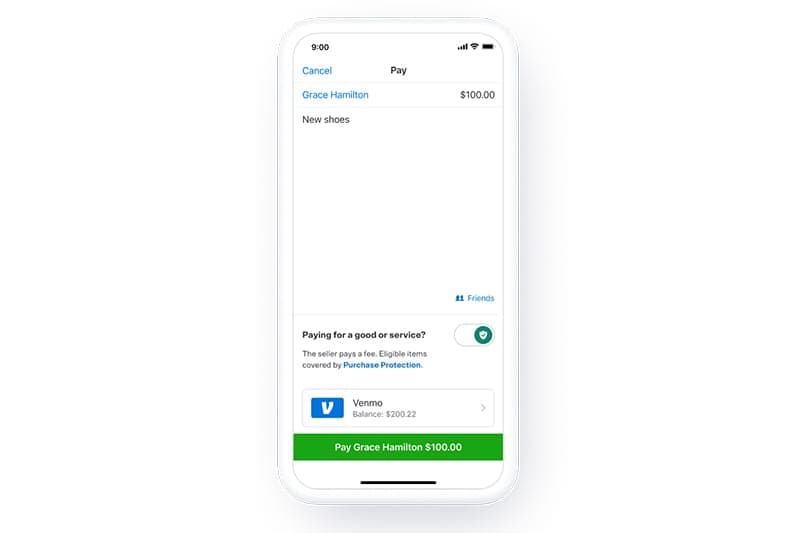PayPal Goods and Services is a payment system for safely buying and selling items and services online. It offers protection to both the buyer and the seller, ensuring that transactions are secure. When a buyer pays for goods or services, they have the option to open a dispute if the item does not arrive or is not as described, which provides a layer of security for their purchase.
For sellers, using PayPal Goods and Services means they can receive payments from customers with peace of mind, knowing that their transaction is covered by PayPal’s Seller Protection. This system also simplifies the payment process by handling the money transfer securely and providing both parties with a record of the transaction.

PayPal Payment Options: Goods and Services
PayPal for Purchases
When you’re buying something online or in person, using PayPal’s “Goods and Services” option offers you protection. It’s a safe way to pay because you’re covered by PayPal’s Buyer Protection program. This means if your item doesn’t arrive or isn’t as described, PayPal can help you get your money back.
Fees and Considerations
Keep in mind, “Goods and Services” payments come with a small fee for the seller. This fee helps cover the cost of Buyer Protection and other PayPal services. So, if you’re sending money to a friend or family member, it’s usually better to use the “Friends and Family” option, which is free.
When to Use “Goods and Services”
Use “Goods and Services” when you’re:
- Buying items online from websites or marketplaces
- Paying for services like freelance work or home repairs
- Making purchases in person using the PayPal app or a QR code
PayPal Purchase Protection
PayPal Purchase Protection covers you for a wide range of issues, including:
- Item not received: If your item doesn’t arrive or is significantly different from the seller’s description, you can file a claim for a refund.
- Unauthorized transactions: If someone makes a payment from your PayPal account without your permission, you can report it to PayPal for assistance.
- Other issues: PayPal may also offer protection for other issues, such as damaged items or problems with returns.
How to Use “Goods and Services”
- Log in to your PayPal account.
- Choose the “Send & Request” option.
- Select “Pay for goods or services.”
- Enter the recipient’s email address or phone number.
- Enter the amount you want to pay.
- Review the details and click “Send” to complete the payment.
Key Takeaways
- PayPal Goods and Services provides secure transactions for online purchases.
- The system offers protection for both buyers and sellers.
- Using this service adds a layer of security and simplifies payments.
Understanding PayPal Goods and Services
PayPal Goods and Services offers a secure way for buying and selling online. This feature of PayPal ensures that both buyers and sellers are protected during transactions.
What PayPal Goods and Services Entails
PayPal Goods and Services is a feature for making payments online. When a buyer pays for an item or service, they select the ‘Goods and Services’ option in their PayPal account. This tells PayPal the payment is for a purchase. Both personal and business accounts can use this service. It works for domestic and international payments and includes various payment methods.
The Role of Purchase Protection
PayPal’s Purchase Protection covers buyers if they don’t receive an item or it’s not as described. For sellers, it offers protection against claims, chargebacks, or reversals in the case of unauthorized payments and items not received by the buyer. This service aims to make transactions safer and reduce fraud.
Fee Structure for Goods and Services Transactions
PayPal charges fees for goods and services transactions. Fees vary depending on the type of account and location. For example:
- Domestic transactions: typically around 2.99% of the transaction amount.
- International transactions: include an additional fee for currency conversion.
Business accounts might incur merchant fees, which are costs for using PayPal’s payment processor. These fees are part of doing business online and are automatically taken from the payment received.
Frequently Asked Questions
This section addresses common questions about PayPal’s fees, procedures, and protections for goods and services transactions.
How does PayPal calculate the fees for goods and services transactions?
PayPal charges sellers a percentage of the total sale for goods and services transactions. This fee is typically a combination of a percentage of the transaction amount plus a fixed fee. Recently, PayPal updated its fee structure to a flat percentage rate without a fixed fee for U.S. customers.
What steps should a seller follow to use PayPal goods and services effectively?
A seller should start by creating a PayPal account and then list their goods or services. When a sale occurs, they invoice the buyer through PayPal. They should ensure accurate descriptions of their offerings to avoid disputes. After the transaction, they can track the payment in their PayPal account.
What are the differences between sending money via goods and services and friends and family options on PayPal?
Sending money via goods and services comes with buyer and seller protections, which is suitable for commercial transactions. On the other hand, sending money to friends and family is meant for personal transfers and does not include these protections.
Can buyers receive a refund through PayPal goods and services, and how does the process work?
Yes, if a product or service is different from its description, buyers can dispute the transaction within PayPal. PayPal will review the case and may issue a refund.
What protections does PayPal offer for purchases made through the goods and services option?
PayPal offers protection for buyers by refunding the payment if the item purchased isn’t received or isn’t as described. For sellers, PayPal protects against unauthorized transactions and helps to resolve disputes.
Is using PayPal goods and services a secure method for online transactions?
PayPal employs data encryption and fraud monitoring to secure transactions. Using goods and services for online purchases does not share your credit card or banking information with merchants, making it a more secure option.






